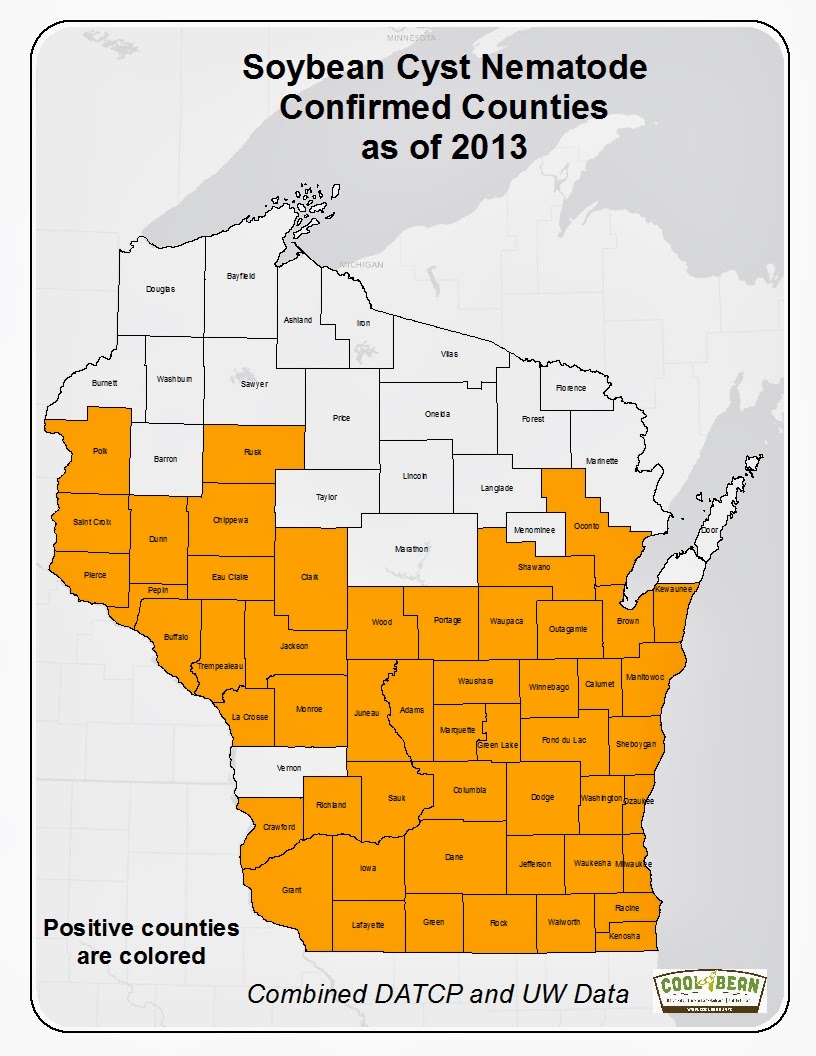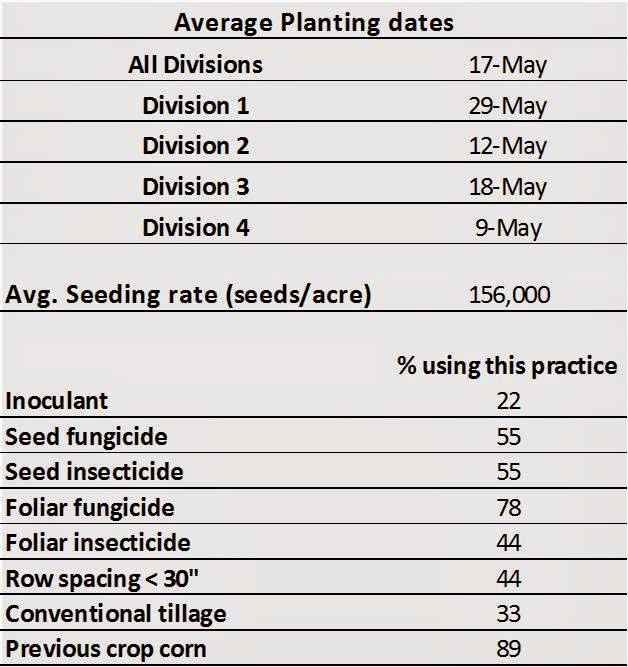The Nebulous of Non-Nodulating Soybean in 2015 and Again in 2016 and Again in 2017
I have received a deluge (pun intended) of questions regarding the overall lack of soybean nodulation and general pale green coloration of the crop. As a doctor….well Ph.D….I prescribe less rain, sunshine, and call me in two weeks if the problem still exits… Outside of this obvious issue here are the four most common questions I have received and my responses for your consideration.
- Why is nodulation such a problem this year? Abiotic stress such as low pH (≤ 6.0), saturated or droughty soils and cool soil temperatures can negatively impact nodulation (Valentine et al. 2011). Duzan et al. (2004) reported that root hair deformations (a physiological precursor to rhizobia infection and nodulation) was 64 and 82% of the control when rhizosphere (root zone) temperatures were 59 and 63 degree F when compared to 77 degrees F. This suggests that the cool soil temperatures we have been experiencing have likely limited the infection sites available for nodulation to occur. This effect has likely been exacerbated in no-till or compacted conditions. In short less nodulation sites on the roots means increased likelihood for less nodules.
- I double inoculated my soybeans on virgin ground and my nodule count is really low? First, please refer to #1 above regarding abiotic stress on soybean nodulation. Secondly remember to read and follow the application, compatibility, and planting timing of inoculants. In reading through various inoculant labels today, I saw everything from ‘not tested’ to ‘not compatible to plant within hours to weeks to months of application’. Lastly remember there is a poor correlation between nodule number and N2 fixation, so don’t get overly concerned about nodule count; it is nodule efficiency that matters and you can’t measure that by counting. In short, read the labels and make sure everything is compatible and your application and planting window is adequate prior to purchasing the product.
- How long will soybeans continue to put on new nodules? Dr. Purcell indicated that they can measure very active N2 fixation almost until the end of seedfill (personal communication). Given the normal life span of an active nodule is 4-5 weeks, this would suggest that soybean will continue to put on new nodules (if the environment is conducive and rhizobia are present) until R6 soybean (late pod fill).
- Should I apply nitrogen to these poorly nodulating soybeans, and if so, how much? My general answer is no and none. First of all, the application of nitrogen to soybean beyond a “starter” rate (≤~30 pounds) will lead to a rapid and dramatic inhibition of N fixation (Sinclair, 2004). Though it does not appear that the applied nitrogen is directly damaging to the N fixation machinery (nodules), it will reduce or stop fixation. If the soil NO3 levels drop, then N fixation can resume in about a week (Sinclair, 2004). Over-application of N will shut down whatever rhizobia is actively working. Furthermore, our 2014 and 2015 data shows that a soybean plant takes up 3.75 pounds of N in above-ground tissue per bushel of grain. So a 80 bu/a crop removed 302 pounds of N/a. This does not account for below-ground uptake or nitrogen loss and efficiency from the applied nitrogen. In short, that is tough math to get a positive ROI on.
Literature cited:
Gaspar, A., C. Laboski, S. Naeve, and S.P. Conley. 2017. Dry Matter and Nitrogen Uptake, Partitioning, and Removal across a Wide Range of Soybean Seed Yield Levels. Crop Sci. doi: 10.2135/cropsci2016.05.0322
Dr. Larry Purcell (personal communication 7/16/15)
H. M. Duzan, X. Zhou, A. Souleimanov and D. L. Smith*. 2004.Perception of Bradyrhizobium japonicum Nod factor by soybean [Glycine max (L.) Merr.] root hairs under abiotic stress conditions. Journal of Experimental Botany, Vol. 55, No. 408, pp. 2641–2646, December 2004 doi:10.1093/jxb/erh26
Valentine, A., V. Benidito, and Y Kang. 2011. Legume Nitrogen Fixation and Soil Abiotic Stress: From Physiological to Genomics and Beyond. Annual Plant Reviews. 42:207-248.












